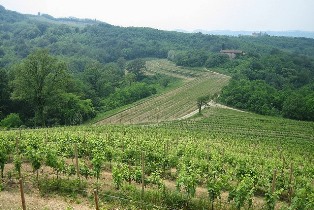
WTI Magazine #47 2014 November, 12
Author : Jennifer Gentile Martin Translation by:
Friuli-Venezia Giulia used to be divided into two separate provinces, Friuli named after those that inhabited the area, and Venezia Giulia, which was part of the Venetian Republic. This area back in the day was where the spice route ran through along with travelers from northern Europe and the Middle East. In 1954 after the post-war is when the territories were realigned and became what we know today as Friuli-Venezia Giulia.
A man of this region, Mario Schiopetto, developed the standards for white wine making in Italy with the introduction of using stainless steel temperature controlled tanks. The goal was to display the fruit as purely as possible without use of oak. Later Josko Gravner introduced barrel fermented wines to the region and producers have been experimenting since and have also created wines that have come to be known as "super whites", imitating Tuscany's "super tuscans".
White grapes
This area had many Austrian and French influences as you will see in the list of white and red grapes grown throughout the region, but with every region they have their own special indigenous varietals. Although most of Italy produces red wines this region is known for producing some of Italy's most vibrant, crisp and racy whites. Here the indigenous grapes are tocai friuliano, also known as tocai, and ribolla gialla, but there is also a variety of international grapes grown there including pinot grigio, chardonnay, sauvignon blanc and pinot bianco.
Red grapes
With more of a reputation for whites it's interesting that about half of the production is red consisting of international grapes including merlot that dominates the land as well as cabernet sauvignon and cabernet franc. The indigenous grapes here are schioppettino, refosco and tazzelenghe, which I will break down in a later issue. Almost half of the wines of Friuli-Venezia Giulia have received the DOC status.
Dessert wine
This region also produces two dessert wines including Verduzzo di Ramandolo made from the verduzzo grape named after the village where its produced (Ramandolo). The other dessert wine is Picolit made from picolit grapes, but these grapes are very finicky considering only half of the flowers last to produce grapes so its rather an expensive wine and not all producers will make this wine.
It may seem as though there are a variety of grapes produced here, but prior to this region being hit by phylloxera over 350 grapes were grown here according to the Wine Bible.
With the northern part of the zone being mountaineous due to the Alps, many of the vineyard sites are located on the plain fields and lower foothills of the mountains. Here you experience warm days and cool nights due to the proximity of the Adriatic Sea allowing the wines to evenly ripen creating a balance between the fruit and acidity of the wines.
Two well-known wine producing regions here are the Collio
Goriziano, known as Collio, and the Colli Orientali del Friuli that are located near the hillsides close to Slovania where the soil differs than the other regions and a they are located on a slightly higher elevation.
Top producers
Some of the top producers of this region are: Abbazia di Rosazzo, Mario Schiopetto, Jermann, Ronco dei Tassi, Josko Gravner, Livio Felluga and others.



